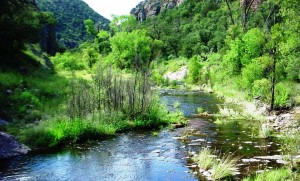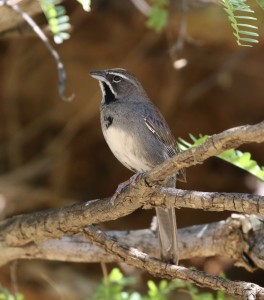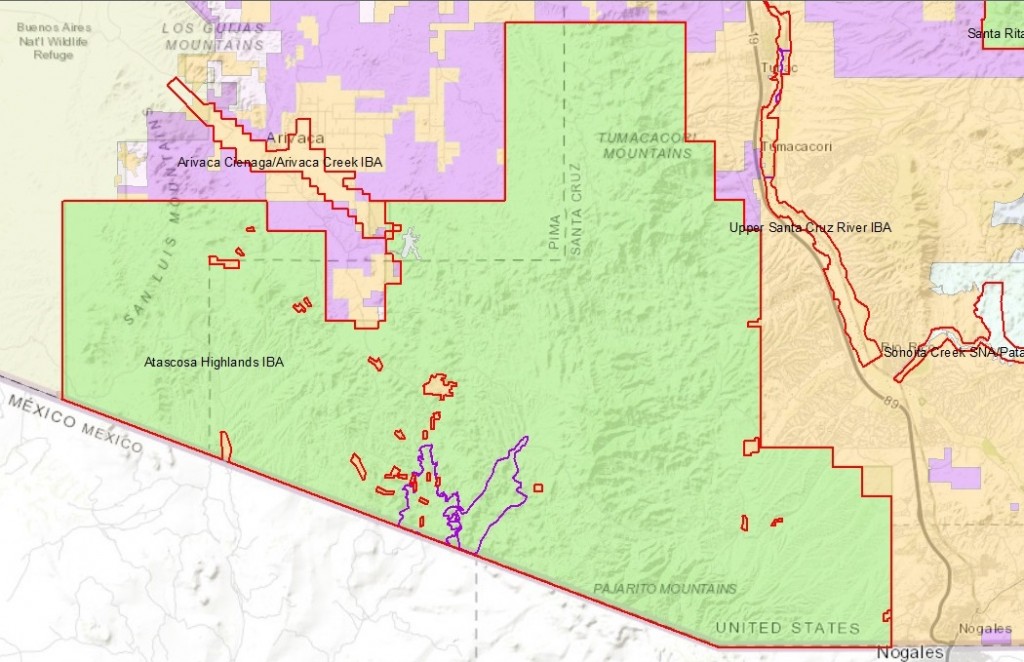Size: 313 square miles, 810 square kilometers
Identified: 6/2019, encompassed previously identified California Gulch IBA (7/2002) and Sycamore Canyon IBA (4/2003)
Ownership: Coronado National Forest
County: Santa Cruz
Location: 31.65105374697809, -110.52903541444465
Directions to site: From Tucson: Go south on I-19 to Exit 12 to access Ruby Road. Go west on Ruby Road into the Atascosa Highlands. Ruby Rd is the main access point into this area. Other exits off of I-19 are access points for areas further north such as Rock Corral Canyon. Virtually all of this land is open to the public and there are some relatively well known areas favored by birders such as Sycamore Canyon, Pena Blanca Lake, Arivaca Lake and California Gulch. There are also less known excellent birding areas such as Walker Canyon, Pena Blanca Canyon and Rock Corral Canyon.
Site Description:
 Oak savannah and oak woodland with a heavy Madrean influence dominate almost all of the Atascosa Highlands with undulating bajadas of oak savannah, spectacular intact canyons and highly valuable riparian habitat, alive with streams and precious pools. It is in this spectacular setting that hikers can spend days exploring ridge tops and canyons. Wildlife enthusiasts and botanists can revel in an area that boasts many endemic species that occur nowhere else on earth and more wildlife and plant species than those that inhabit some entire states.
Oak savannah and oak woodland with a heavy Madrean influence dominate almost all of the Atascosa Highlands with undulating bajadas of oak savannah, spectacular intact canyons and highly valuable riparian habitat, alive with streams and precious pools. It is in this spectacular setting that hikers can spend days exploring ridge tops and canyons. Wildlife enthusiasts and botanists can revel in an area that boasts many endemic species that occur nowhere else on earth and more wildlife and plant species than those that inhabit some entire states.
The Atascosa Highlands comprise three small closely spaced mountain ranges on the United States and Mexico border just west of Nogales, the Tumacacori Mountains, the Atascosa Mountains and the Pajarito Mountains. The San Luis Mountains lie just to the west of these three mountain ranges. These ranges are continuous with similar highlands that stretch southward into Mexico. Although unimposing in elevation, the Atascosa Highlands have sharp ridges, steep slopes, and rocky cliffs that limit the number of roads and give the area a feeling of remoteness. The vegetation is scattered evergreen oak woodlands on north facing slopes with scrub-grasslands on south facing slopes. Mesquite and acacia shrubs are common, as are agaves and sotols.
Birds: This area is well known among birders for the rare species found here at times.
Year-round: Montezuma Quail, Ladder-backed Woodpecker, Black Phoebe, Mexican Jay, Bridled Titmouse, Rock Wren, Canyon Wren, Bewick’s Wren, Cactus Wren, and Black-throated Sparrow
Breeding: California Gulch has a small but consistent population of Five-striped Sparrows (10 to 15 pairs), Gray Hawk, Yellow-billed Cuckoo, Elegant Trogon, Tropical Kingbird, Thick-billed Kingbird, Rose-throated Becard, Broad-billed Hummingbird, Black-capped Gnatcatcher, Lucy’s Warbler, Yellow Warbler, Varied Bunting, Northern Beardless-Tyrannulet, Vermilion Flycatcher, Dusky-capped Flycatcher, Ash-throated Flycatcher, Brown-crested Flycatcher, Cassin’s Kingbird, Bell’s Vireo, Purple Martin, Abert’s Towhee, and Buff-collared Nightjar, a rare species in Arizona, Rufous-capped Warbler, Whiskered Screech-Owl, Mexican Whip-poor-will.
Migration: Rufous Hummingbird, Olive-sided Flycatcher, Greater Pewee, Willow Flycatcher, Hammond’s Flycatcher, Gray Vireo, Tree Swallow, Hermit Thrush, Swainson’s Thrush, Eastern Bluebird, MacGillivray’s Warbler, Virginia’s Warbler, Nashville Warbler, Black-throated Gray Warbler, Townsend’s Warbler, Wilson’s Warbler, Yellow-breasted Chat, Summer Tanager, and Blue Grosbeak. Winter: Red-naped Sapsucker, Gray Flycatcher, Ruby-crowned Kinglet, Townsend’s Solitaire, Green-tailed Towhee.
eBird focus species: Five-striped Sparrow, Gray Hawk, Yellow-billed Cuckoo, Elegant Trogon, Tropical Kingbird, Thick-billed Kingbird, Montezuma Quail, Lucy’s Warbler, Yellow Warbler, Varied Bunting, Northern Beardless-Tyrannulet, Bell’s Vireo, Purple Martin, and Abert’s Towhee, Rufous-capped Warbler.
Conservation Issues: Poor water quality from past mining activities, grazing, and illegal activities (drugs and immigrants).
Conservation Strategies: Border enforcement, Coronado Forest land management plan.
Map:
IBA criteria:
Site Important to Special Status Avian Species
- Endangered and Threatened (Federally listed in Arizona): western Yellow-billed Cuckoo, Mexican Spotted Owl
- U.S. Fish and Wildlife Service Bird Cons. Concern *Includes (from BCR 33/34): Five-striped Sparrow, Elegant Trogon, western Yellow-billed Cuckoo, Common Black Hawk, Golden Eagle, Elf Owl, Costa’s Hummingbird, Northern Beardless-Tyrannulet, Lucy’s Warbler, Canyon Towhee, Rufous-winged Sparrow, Cassin’s Sparrow, Black-chinned Sparrow.
- AZ Species of Greatest Conservation Need, Tier 1 AND 2): Five-striped Sparrow, Buff-collared Nightjar, Black-capped Gnatcatcher, Eastern Bluebird, Dusky-capped Flycatcher, Gray Hawk, Broad-billed Hummingbird, Desert Purple Martin, Mexican Spotted Owl, Golden Eagle, Tropical Kingbird, Thick-billed Kingbird, Abert’s Towhee, Rufous-winged Sparrow.
- AZ IBA Program Specific Species: Mexican Whip-poor-will, Eastern Bluebird, Desert Purple Martin
Rare, Unique, or Exceptional Representative Habitat/Ecological Community – Border Canyons dominated by Madrean Oak woodland and oak-savannah with localized areas of Madrean Thorn Scrub community.









